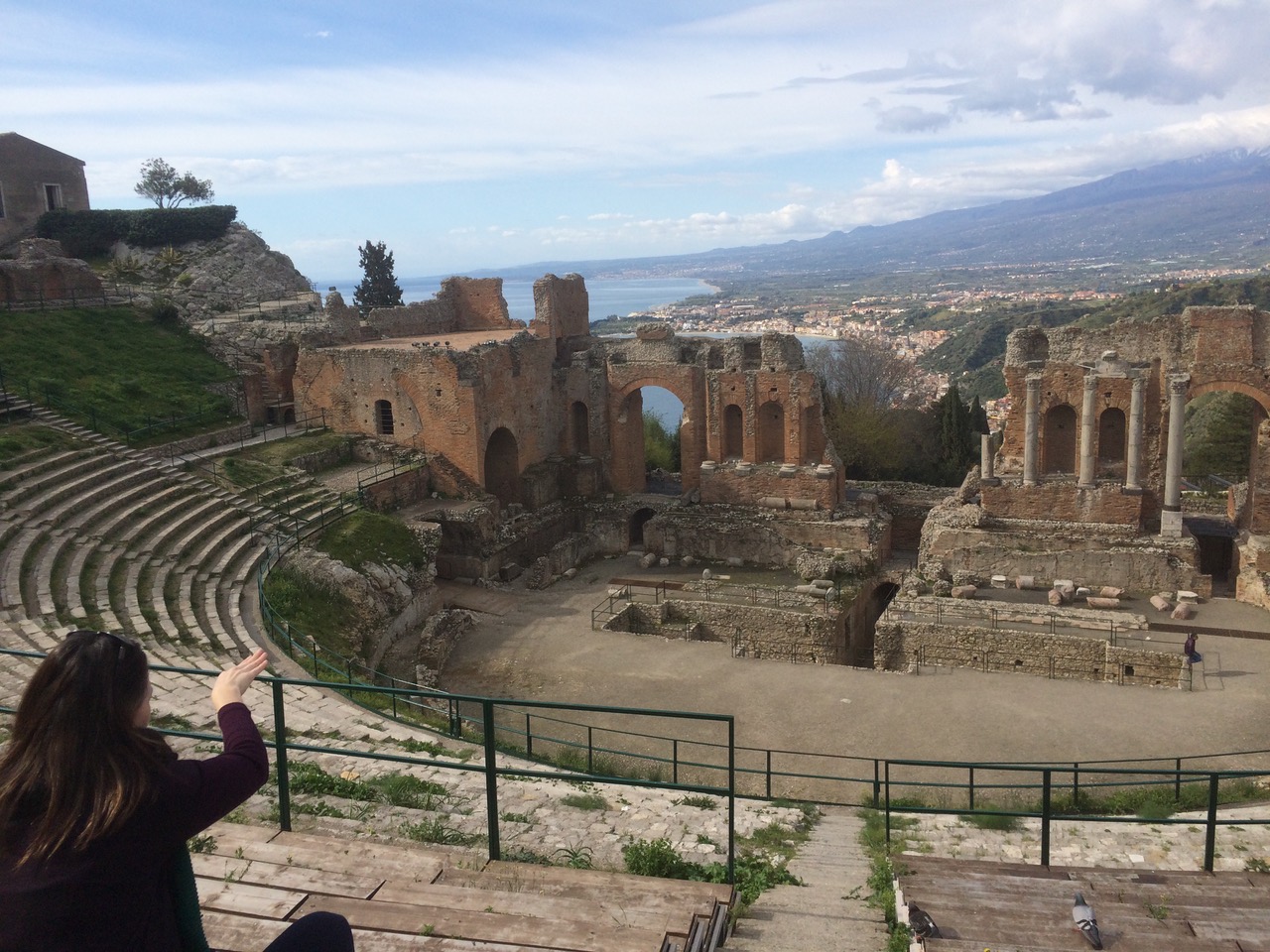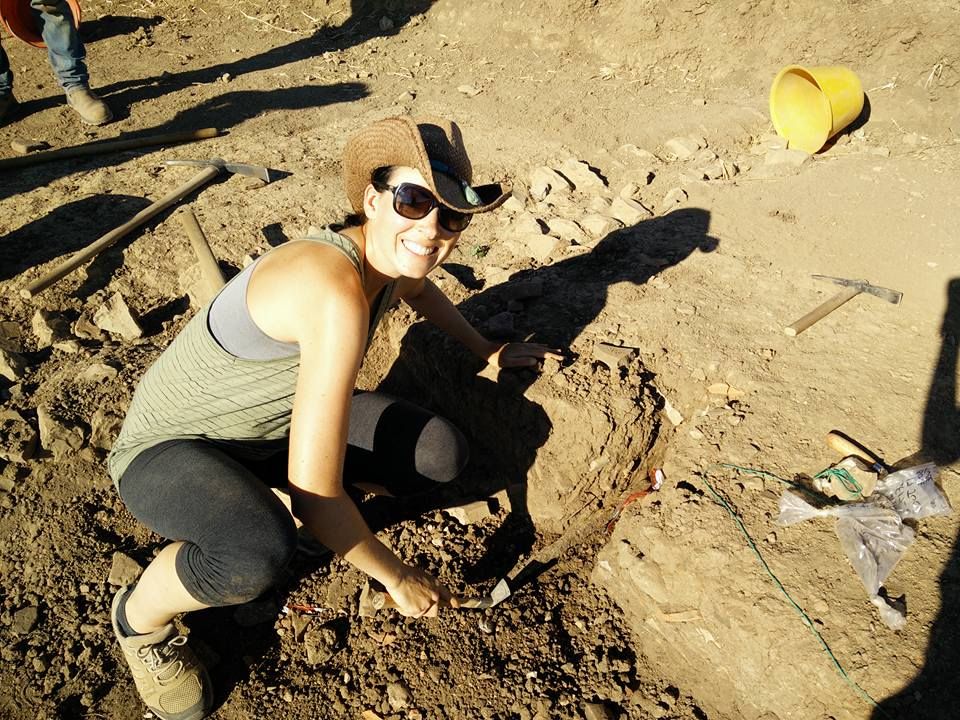Honors Passport: Sicily

Honors Passport: Sicily, A Mediterranean Mosaic
January 1-13, 2019
Honors College Study Abroad Grant funding available
In this Honors Passport experience, join us as we explore Sicily's mosaic culture through the lens of its art, architecture and archaeology. Located in the center of the Mediterranean, Sicily once linked the Latin West to the Greek East, Christianity to Islam, and continues today to function as a bridge between Europe and North Africa. Over the last 3,000 years, the island's strategic location invited waves of conquest by foreign powers. Each civilization – from Phoenician maritime traders and ancient Greek colonizers to the Allied Invasion during World War II – left behind scars. But they also contributed the best aspects of their cultures to create remarkably complex and visually stunning spaces, where you will receive hands-on training in “reading” visual and material culture as expressions of cross-cultural exchanges.
Prepare to spend every day on a learning-filled series of adventures as we circumnavigate the island, starting and ending in Sicily's bustling capital city Palermo, with trips to the Capuchin Catacombs and the Palatine Chapel. After visiting the Norman cathedral in the seaside village of Cefalù and the Greco-Roman theatre of Taormina, we will hike Mt. Etna, whose ever-smoking peak dominates the landscape.
Stay with us on the myth-shrouded island of Ortygia in Syracuse and visit the picturesque Baroque town of Noto. In the center of the island, explore the ancient Sicel-Greek town of Morgantina and the world-famous mosaics in the Roman villa at Piazza Armerina. On Sicily’s west coast, hike down the Valley of the Temples in Agrigento before visiting the ancient Greek colony of Selinunte, the Arabic Casbah of Mazara del Vallo and the Punic settlement on Motya. A stop at the majestic Greek theatre in Segesta and the cathedral of Monreale, one of the best examples of Norman architecture in the world, completes the course. By the end of this trip, you will have an expert understanding of the multi-layered, centuries-long development of Sicily’s history and the ways in which cultural hybridization – the mixing and synthesizing of individual cultural tesserae– produced a wholly unique Sicilian cultural mosaic.
Sicily is an island lying outside time, where past events endure in an external present, a beach on which the tides of successive civilizations have heaped in disorder their assorted treasure.
V. Cronin, The Golden Honeycomb: A Sicilian Quest
What's in it for you:
- Develop an understanding of cultural hybridization in Sicilian visual and material culture
- Refine your research and presentation skills as you prepare your site report on a physical or cultural artifact
- Experienc Sicilian cultural history in an authentic setting, from prehistory through the modern age
What's expected of you:
- Active, insightful engagement in all lectures, discussions and site/museum visits
- Maintenance of a travel journal, in which you will record your responses and reactions to various experiences throughout the trip
- 10-15 minute site report on a topic, monument or artwork, to be presented during the trip
Course Credit:
Honors Passport: Sicily counts as three hours of honors credit in ONE of the following courses:
- History: HIST 3923H
- Classical Studies: CLST 399VH
- Art History: ARHS 3923H
- Humanities Colloquia: HUMN 3923H
Count me in! Apply via the HogsAbroad Portal
About your professors:
 Daniel B. Levine (B.A. Minnesota 1975; Ph.D. Cincinnati 1980) has taught classics at the University
of Arkansas since 1980. He has won several awards for teaching, and has published
essays on the Odyssey, as well as on Theognis of Megara, Josephus, Aeschylus, Aristophanes,
Euripides, Sophocles, Lucian, the Homeric Biographical Tradition, Oak and Acorns,
the comic strip Alley Oop, Rita Mae Brown’s Southern Discomfort and the notion of
“Counterfeit Man” in Greek Lyric poetry.
Daniel B. Levine (B.A. Minnesota 1975; Ph.D. Cincinnati 1980) has taught classics at the University
of Arkansas since 1980. He has won several awards for teaching, and has published
essays on the Odyssey, as well as on Theognis of Megara, Josephus, Aeschylus, Aristophanes,
Euripides, Sophocles, Lucian, the Homeric Biographical Tradition, Oak and Acorns,
the comic strip Alley Oop, Rita Mae Brown’s Southern Discomfort and the notion of
“Counterfeit Man” in Greek Lyric poetry.
His recent publications include essays on the exclamation aiboi in Greek comedy (2016), on feet in Aeschylus's Oresteia (2015), archaic Greek vase representations of Hephaestus with winged shoes (2015), Homeric echoes in Michael Chabon's Pulitzer-prize winning The Amazing Adventures of Kavalier & Clay (2010), the erotics of feet in Ancient Greece (2005), Sophocles’ Philoctetes and Odyssey 9 (2003) and Homer's death in the ancient biographical tradition (2002). Dr. Levine has directed four summer sessions in Greece for the American School of Classical Studies at Athens, one for the Vergilian Society of America and ten “Classics in Greece” summer study tours for University of Arkansas students. This fall will be Dr. Levine's tenth year teaching the first semester of H2P (HUMN 1114H: Roots of Culture).
 Jared M. Phillips joined the faculty of the Program in International Studies in 2016. He earned a Ph.D.
in history at the University of Arkansas under the direction of Dr. Randall B. Woods.
Dr. Phillips is a specialist on the history of 20th-Century America, in particular
U.S. foreign policy, U.S.-Sino relations in the late twentieth century, and human
rights. He has published work on topics ranging from development policy in the Tibetan
highlands and American foreign policy in the 1960s to international human rights.
He and his wife have spent the last eight years working in community development,
environmental issues and agriculture in a variety of locales, including the Tibetan
areas of Western China, rural communities in Guatemala and Pacific Island immigrant
communities in the Ozarks. Among his other projects, Dr. Phillips is currently finishing
a history of the back-to-the-land movement in the Arkansas Ozarks during the 1970s.
In addition to teaching for the International and Global Studies Program, Dr. Phillips
and his wife own and operate a small, mixed-power farm on the western edge of the
Arkansas Ozarks.
Jared M. Phillips joined the faculty of the Program in International Studies in 2016. He earned a Ph.D.
in history at the University of Arkansas under the direction of Dr. Randall B. Woods.
Dr. Phillips is a specialist on the history of 20th-Century America, in particular
U.S. foreign policy, U.S.-Sino relations in the late twentieth century, and human
rights. He has published work on topics ranging from development policy in the Tibetan
highlands and American foreign policy in the 1960s to international human rights.
He and his wife have spent the last eight years working in community development,
environmental issues and agriculture in a variety of locales, including the Tibetan
areas of Western China, rural communities in Guatemala and Pacific Island immigrant
communities in the Ozarks. Among his other projects, Dr. Phillips is currently finishing
a history of the back-to-the-land movement in the Arkansas Ozarks during the 1970s.
In addition to teaching for the International and Global Studies Program, Dr. Phillips
and his wife own and operate a small, mixed-power farm on the western edge of the
Arkansas Ozarks.
 Rhodora G. Vennarucci (Ph.D. University at Buffalo 2015) joined the faculty at the University of Arkansas
as an assistant professor of classics and art history in 2017. She is a Roman archaeologist,
whose research focuses on the socio-economic history of Roman Italy with particular
emphasis on commercial architecture and marketing systems. She has presented at national
and international conferences on Roman shops and shopkeepers, and her current book
project explores how shop design shaped urban space and culture between the late republic
and imperial periods. Rhodora is Co-PI of the Marzuolo Archaeological Project, which
investigates technological innovation at a Roman-period multi-craft production site
in rural Tuscany. She is also Co-PI of the Virtual Pompeii Project, which uses an
innovative holistic approach, integrating network analysis, visual integration analysis,
3D visualization, movement and eye tracking, CNN, and EEG, to investigate spatial
cognition at Pompeii. In addition to her research, she has extensive experience with
study abroad in Italy, having taught at the Intercollegiate Center for Classical Studies
in Rome and co-leading the Classics in Italy and the Virtual Pompeii study abroad
programs at the University of Arkansas Rome Center. Her teaching interests include Roman visual and material culture, Latin epigraphy,
and digital humanities.
Rhodora G. Vennarucci (Ph.D. University at Buffalo 2015) joined the faculty at the University of Arkansas
as an assistant professor of classics and art history in 2017. She is a Roman archaeologist,
whose research focuses on the socio-economic history of Roman Italy with particular
emphasis on commercial architecture and marketing systems. She has presented at national
and international conferences on Roman shops and shopkeepers, and her current book
project explores how shop design shaped urban space and culture between the late republic
and imperial periods. Rhodora is Co-PI of the Marzuolo Archaeological Project, which
investigates technological innovation at a Roman-period multi-craft production site
in rural Tuscany. She is also Co-PI of the Virtual Pompeii Project, which uses an
innovative holistic approach, integrating network analysis, visual integration analysis,
3D visualization, movement and eye tracking, CNN, and EEG, to investigate spatial
cognition at Pompeii. In addition to her research, she has extensive experience with
study abroad in Italy, having taught at the Intercollegiate Center for Classical Studies
in Rome and co-leading the Classics in Italy and the Virtual Pompeii study abroad
programs at the University of Arkansas Rome Center. Her teaching interests include Roman visual and material culture, Latin epigraphy,
and digital humanities.